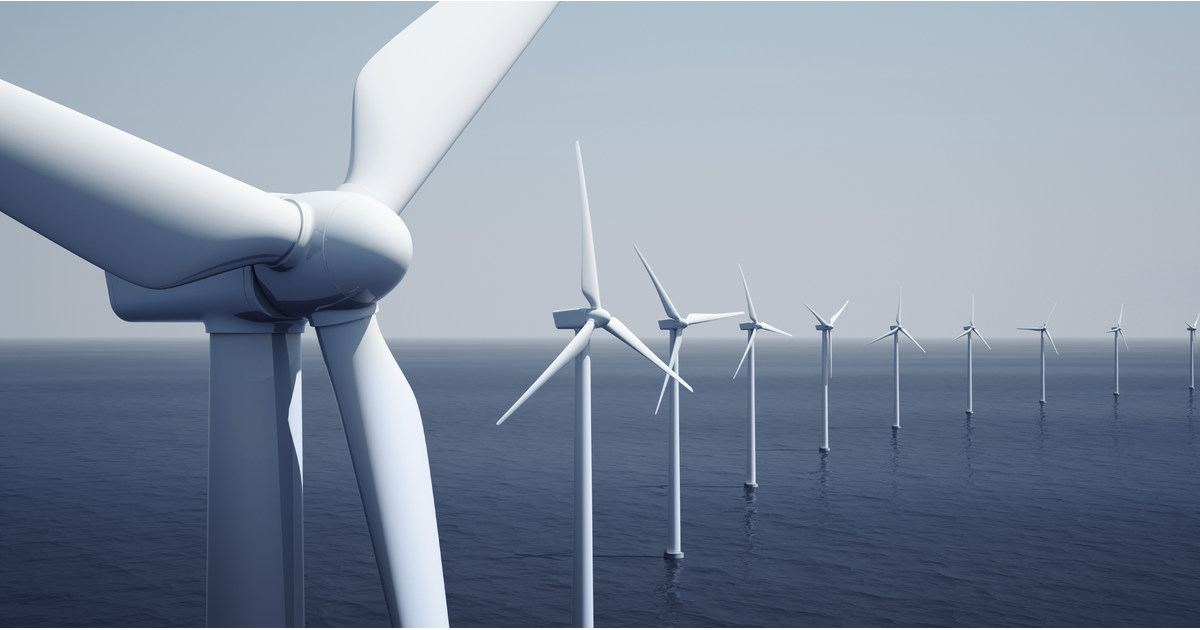Out-Law Analysis 4 min. read
New legislation to kick-start Australian offshore wind industry

24 Sep 2021, 12:59 am
A new bill introduced to federal parliament will spark the development of the emerging offshore wind industry in Australia.
The Offshore Electricity Infrastructure Bill 2021 (Bill) is the first of its kind for Australia and aims to establish a regulatory framework for the construction, operation, maintenance and decommissioning of offshore electricity projects. The Bill will empower the minister for Industry, Science, Energy and Resources to declare areas that are suitable for offshore renewable energy infrastructure, as well as to issue licences for private industry participants to undertake different types of offshore infrastructure-related activities.
It is important to note that the offshore area only includes waters which extend beyond three nautical miles offshore, to the edge of the Australian exclusive economic zone. It will not cover coastal regions up to three nautical miles offshore, which will continue to be covered by State legislation.
The minister will need to declare the area suitable before licences may be issued. Given the number of projects in development, it is expected that there will be a backlog of areas to consider and declare and this will invariably delay certain projects. Which projects and areas the minister chooses to prioritise remains to be seen.
The Bill will likely pave the way for a number of proposed offshore wind projects throughout the country, including the Star of the South with capacity of 2.2 gigawatts (GW) in Victoria, 2GW Bass Offshore Wind in Tasmania, 1.5GW Ninety Mile Beach in Victoria, 1.1GW Cliff Head Offshore Wind in West Australia and 3GW Illawarra Offshore Wind in New South Wales, among others.
The Bill will need to be passed by the Australian parliament before it becomes law.
We are seeing a surge of new, large-scale offshore wind farms starting to enter early development around the country. Areas of greatest activity are located in western and south-western Western Australia, a small area off the coast of Queensland, and the New South Wales and Victorian coastlines.

James Morgan-Payler
Partner, Head of Asia Pacific
The fundamental purpose of our regulatory regime should be to promote the emerging offshore wind industry while maintaining appropriate protections for the environment, Native Title holders and other stakeholders. While there are areas in which the Bill arguably falls short, we think that this Bill is certainly a step in the right direction.
There are four categories of licences under the Bill including feasibility licences, commercial licences, transmission and infrastructure licences and research and demonstration licences.
Feasibility licences
Feasibility licenses will be granted so as to enable the licence holder to assess the feasibility of an offshore project within a declared area, and later apply for a commercial licence if the project is to proceed.
Multiple licences can be granted in respect of a declared area and they cannot overlap. The feasibility licence will be granted for a maximum period of seven years but will expire earlier if a commercial licence is granted in respect of the same area before that date.
It is expected that feasibility licences will include work programme and minimum spend requirements similar to those applied to mining tenements and oil exploration licences. This is because licence areas are exclusive, which is licence areas must not overlap. The minister will not want licensees to sit on licence areas without action.
Commercial licences
A commercial licence will allow for the construction, commissioning and ongoing operation of commercial scale offshore electricity infrastructure. The licence will be granted for a duration of up to 40 years but can be extended in certain circumstances.
Transmission and infrastructure licences
Transmission and infrastructure licences authorise the licence holder to construct and operate infrastructure that will store, transmit or convey electricity which may or may not be from renewable sources or a renewable energy product. Unlike the other categories of licences, a transmission and infrastructure licence can be issued for the life of the asset and does not require the transmission infrastructure to be wholly located within a declared area.
Research and demonstration licences
The research and demonstration licence authorises research into, or demonstration of, the capabilities of small scale offshore renewable energy infrastructure or offshore electricity transmission infrastructure. These licences are intended for emerging technologies such as wave, tidal or ocean thermal electricity generation. The licence period will be for a maximum of 10 years, with the possibility of extension, however any infrastructure installed under this licence must be removed by the end of the licence period.
The research and demonstration licences are not subject to the competitive processes prescribed for feasibility licences and can overlap with other classes of licence.
In order to be granted a licence, among other things, applicants will need to meet certain eligibility and merit criteria. While the complete list of merit criteria remains to be confirmed through regulations, applicants will, among other things, need to satisfy the minister that the project is viable and that the applicant meets the technical and financial capability to carry out the proposed activities. It is expected that the technical and financial capability thresholds will be high.
There is a clear intention in the Bill that the taxpayer will not be left with the decommissioning and remediation costs for recalcitrant licensees. For example, the requirement to provide performance security at ss. 117 to 119. Given that the scheme will be administered by NOPSEMA and NOPTA, it is expected that the financial and technical capability criteria may be broadly consistent with those applied to the exploration and production permits for offshore petroleum and accordingly will limit exploration and development to established and well-funded players in the industry.
Once a licence in granted, regardless of the category, licence holders will also be required to:
- hold an approved management plan; and
- provide appropriate financial security that will cover the cost of demobilising any offshore electricity infrastructure which is installed; and
- comply with any other licence conditions.
The same regulator established under the Offshore Petroleum and Greenhouse Gas Storage Act 2006 (Cth), being the National Offshore Petroleum Safety and Environmental Management Authority (NOPSEMA) will be the "offshore infrastructure regulator" under the Bill. Similarly, the same administrator, being the National Offshore Petroleum Titles Administrator (NOPTA) will be the "registrar" under the Bill.
NOPSEMA and its inspectors will have powers to monitor and enforce compliance and deal with contraventions under the Bill. There are a range of offences under the Bill, including offences of strict liability and which may result in imprisonment for contraventions. This includes the violation by a vessel of a ‘safety zone’.
The Bill provides for safety zones and protection zones to be established to assure the safety of offshore workers and other users of the marine environment and to protect marine assets from damage.
The Bill does not contain a fully bespoke safety framework, in contrast to the equivalent offshore petroleum legislation, but rather the standard Work Health and Safety Act 2011 will apply subject to some amendments set out in the Bill. NOPSEMA will be responsible for monitoring and enforcing WHS obligations. Whether this more generic approach to safety will be suitable to the very specific environment of offshore wind remains to be seen.
Where the Bill does not expressly address a matter, existing legislation will continue to apply, which is in relation to environmental approvals and connection applications. It remains to be seen whether the existing legislation will be adequately nuanced for the development of offshore electricity infrastructure.
Co-written by Leanne Olden, Toby Evans and Elsie Richardson of Pinsent Masons



